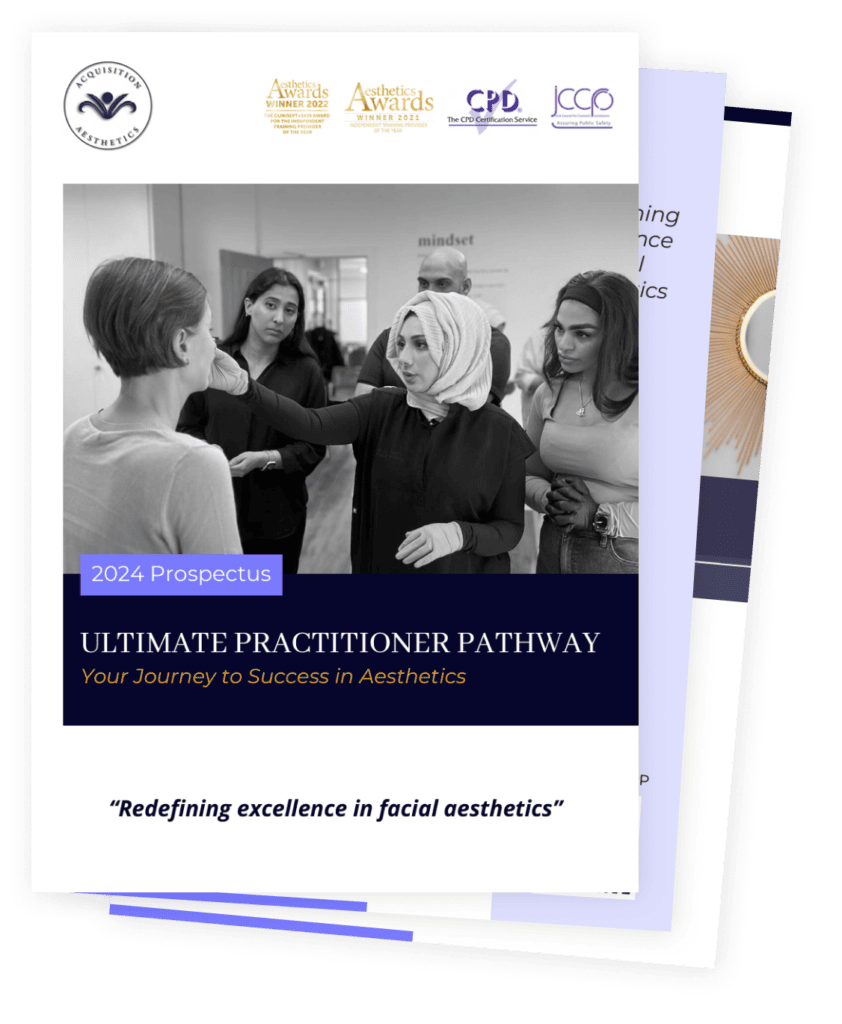Regenerative medicine in aesthetics focuses on repairing and regenerating soft tissues lost or damaged through ageing. This area of non-surgical aesthetic medicine is becoming extremely popular as highlighted in Hamilton Fraser’s recent survey, revealing that 64.1% of practitioners are interested in this area.
This survey emphasises the growing demand for regenerative procedures and how an increasing number of aesthetic practitioners are interested in exploring this area of aesthetics. With regenerative treatments trending among practitioners, it’s essential for them to understand how to handle potential complications should any arise.
From common complications and risks to preventative measures and protocols, discover how to navigate complications in regenerative aesthetics.
Overview of Regenerative Medicine in Aesthetics
Regenerative medicine in aesthetics seeks to reverse the ageing process by harnessing the body’s natural healing and regenerating properties. Born out of advancements in biotechnology and traditional regenerative medicine, regenerative aesthetic treatments utilise the body’s natural healing mechanisms, such as stem cells, biochemical cues, and scaffolds, to promote soft tissue rejuvenation.
A great example of regenerative aesthetics is platelet-rich plasma (PRP) therapy. PRP therapy stimulates the skin’s natural production of collagen and elastin to enhance its quality and appearance. PRP reduces the signs of ageing, boosts radiance, enhances skin tone, and creates a firmer and more youthful appearance.
PRP therapy is also known as the ‘vampire facelift’ because it harnesses the natural healing properties found in our blood. The treatment involves extracting and processing a small amount of blood to isolate the platelet-rich plasma and then re-injecting it into targeted areas to stimulate tissue repair and regeneration.
Another popular treatment in regenerative aesthetics is the use of polynucleotides, known for their regenerative properties. Polynucleotide treatments are versatile in nature and can be applied across the eyes, face, and body to enhance the beauty and youthfulness of one’s appearance.
As well as aiding skin rejuvenation, regenerative aesthetics is beneficial for hair restoration, scar treatment such as acne scars, wrinkles, lax or sagging skin, stretch marks, crepey skin, rosacea, and ‘age spots’.
Common Complications and Risks
As regenerative aesthetic treatments become more popular for both practitioners and patients, understanding the most common complications and associated risks is crucial.
Infection
In any procedure involving injections, there is a risk of infection if the equipment or medical environment is not properly sterilised. This is why understanding safety protocols in aesthetic medicine is so essential. It’s also the responsibility of the patient to closely follow aftercare instructions otherwise this can also lead to infections.
Some common symptoms of infection include excessive inflammation, redness, and swelling beyond what’s typically expected post-procedure. If the treated area is painful for the patient and warm to the touch this could also be a sign of infection. If the patient is suffering from a fever or if the treated area is producing pus or discharge, this could further suggest infection.
To prevent the risk of infection, ensure all medical equipment is properly sterilised and provide the patient with clear aftercare instructions that they understand. Adhering to the recommended injection or application methods is also vital in reducing the risk of infection.
Allergic Reactions
Allergic reactions can appear immediately after the procedure or may be delayed. Some of the most sudden reactions include itching, redness, swelling, and hives, while rashes or prolonged swelling can appear days after the treatment.
Should a patient suffer from an allergic reaction, immediate treatment may involve administering antihistamines or corticosteroids to reduce the symptoms. For more severe and potentially life-threatening reactions, seek emergency care.
To prevent allergic reactions from occurring, you should conduct a thorough medical review of the patient, ensuring they disclose any medical conditions, allergies, or current medications. Patch testing is also recommended before carrying out the full procedure.
Unwanted Tissue Growth
Regenerative aesthetic treatments involving stem cells can sometimes lead to the growth of unwanted tissue, scarring, and fibrosis. To mitigate these risks, ensure the medical environment is properly sterilised and well-regulated. After the procedure, you should also carefully monitor the patient to swiftly detect any abnormal tissue growth.
Inflammation and Pain
Mild inflammation and pain is the body’s natural response to injury or foreign substances — assuring your patients of this is encouraged. To reduce inflammation, consider using antihistamines or a cold compress to reduce swelling and alleviate pain.
Sometimes, inflammation, swelling, and pain can also be caused by excessive tissue manipulation during the procedure. To reduce these reactions, practitioners should adhere to the recommended injectable techniques to deliver the best results possible.
Ineffective Results
Unfortunately, not all treatments yield the desired results. As a practitioner, it’s important to understand why this can happen and how to address patient expectations.
Understanding patient psychology and setting realistic expectations is crucial for practitioners. Patients often expect perfection but may end up feeling disappointed, even when the results are phenomenal. As an aesthetic practitioner, it’s your responsibility to provide a clear and honest picture of what the treatment can and cannot achieve. To give patients realistic expectations, try using visual aids, before-and-after photos of previous patients, and 3D imaging technology, if available.
In some cases, a patient’s biology can even affect the outcome while in others, the practitioner may be at fault. Unfortunately, underqualified and inexperienced aesthetic practitioners are to blame for many of the ‘botched procedures’ in the UK. That’s why it’s so essential for practitioners to undergo education and training to acquire the experience and knowledge they need to deliver the best-in-class care.
If your patient had realistic expectations and is still truly unhappy with the results, you should offer follow-up treatments or alternative treatments to help them achieve the desired result. By understanding and addressing these potential complications, practitioners can enhance patient safety and satisfaction with regenerative aesthetic treatments.
Best Practices for Managing Complications
In the rapidly evolving field of regenerative aesthetics, navigating and managing complications is essential to mitigating risks and preventing further harm.
Some complications require ongoing care and support for patients beyond the immediate resolution of the issue. Whether this relates to physical concerns or psychological support, practitioners should have defined safety protocols in place to best treat their patients. Aesthetic professionals should also keep a meticulous record of complications and treatment responses to help mitigate any risks going forward.
Preventive Measures and Protocols
Practitioners should be equipped with the skills required to detect potential complications even before they occur. As highlighted above, practitioners should conduct a thorough patient assessment and medical review pre-procedure to find out about the patient’s medical history, allergies, and any medication they’re taking. They should also carry out patch testing before procedures to discover whether patients are allergic to any of the substances used in the treatments.
Setting realistic expectations with your patients ahead of any regenerative aesthetic procedure is also vital. This will provide patients with a clear understanding of the potential outcomes and — if all goes smoothly — they’ll feel satisfied with their results.
Recommended and meticulous injectable techniques during treatments are also paramount in reducing risks. From sterilising medical equipment and preparing the treatment area to adhering to the appropriate application methods, it’s crucial for practitioners to follow standardised protocols. This will help prevent post-procedural infections and aesthetic complications.
Latest Research and Innovations
With regenerative aesthetic treatments on the rise, innovation in the industry is flourishing. For example, the most recent AMWC event in Monaco highlighted a variety of innovations including groundbreaking treatments such as polynucleotides and exosomes. The event also noted the importance of stringent safety protocols and emphasised comprehensive measures to ensure patient safety. By keeping up-to-date with the latest innovations in the field of regenerative aesthetics, practitioners will garner the knowledge they need to effectively deliver the most cutting-edge treatments.
Training and Continuous Education
Whether you’re just starting your journey in regenerative aesthetics or you’ve been working in the industry for a while, there is an array of training programs specially designed for practitioners to master the complexities of regenerative medicine in aesthetics. Through our courses, such as the PRP training course and polynucleotides training programme, you’ll gain essential hands-on experience and discover the latest techniques and technologies in regenerative aesthetics.
With the rapid advancements in regenerative medicine, it’s crucial for practitioners to stay abreast of the latest research and clinical guidelines by undertaking professional training and development. The more equipped you are with the latest industry practices, innovations, and technologies, the more likely you are to earn patient trust and deliver the best results possible.
As the industry evolves, so should you. Through continuous education, practitioners will be able to hone their skills and enhance their proficiency in performing aesthetic treatments. Prioritising patient safety will always be at the heart of the medical aesthetics industry which is why we’ve designed a dedicated complications course, equipping practitioners with the knowledge and experience they need to keep their patients safe, healthy, and happy.


